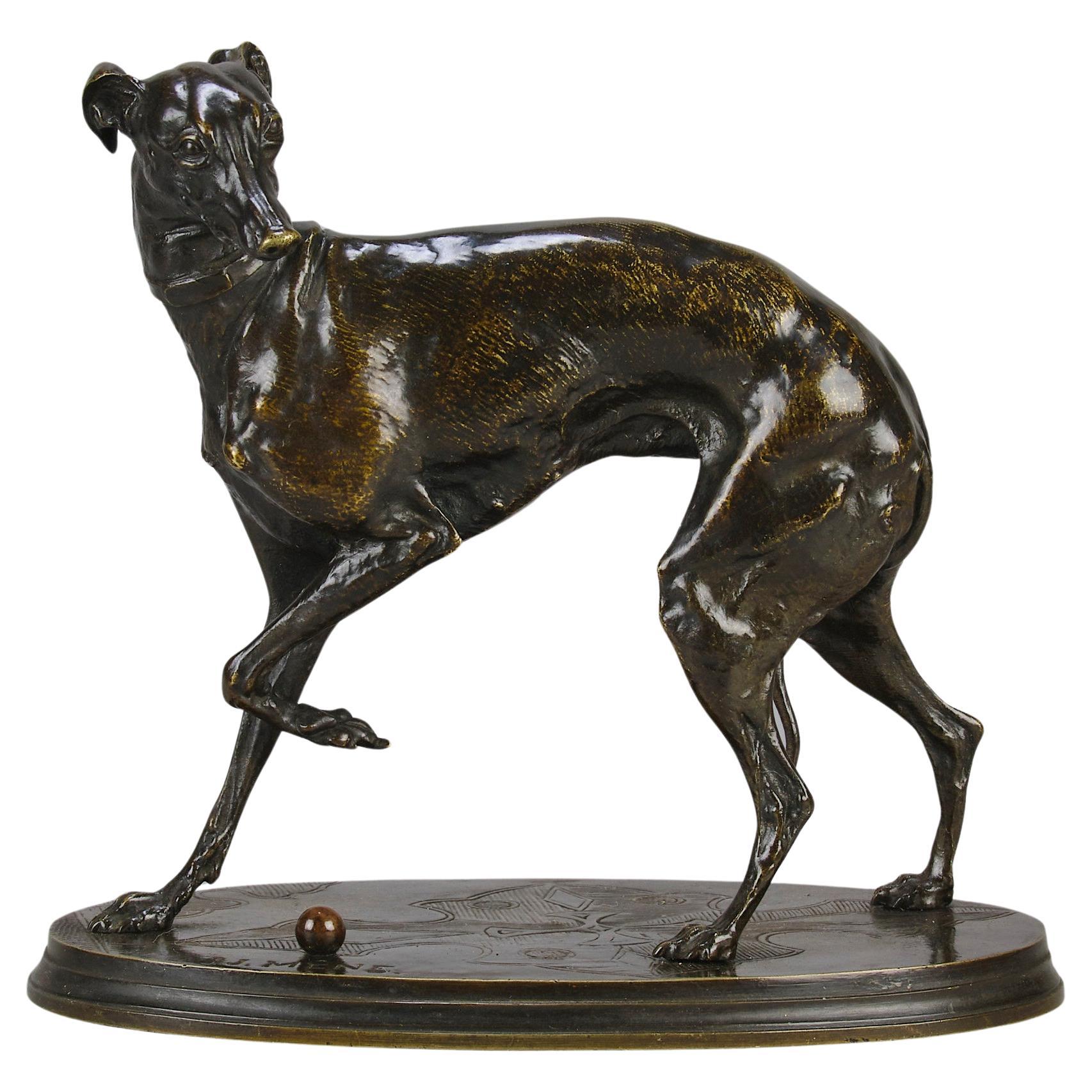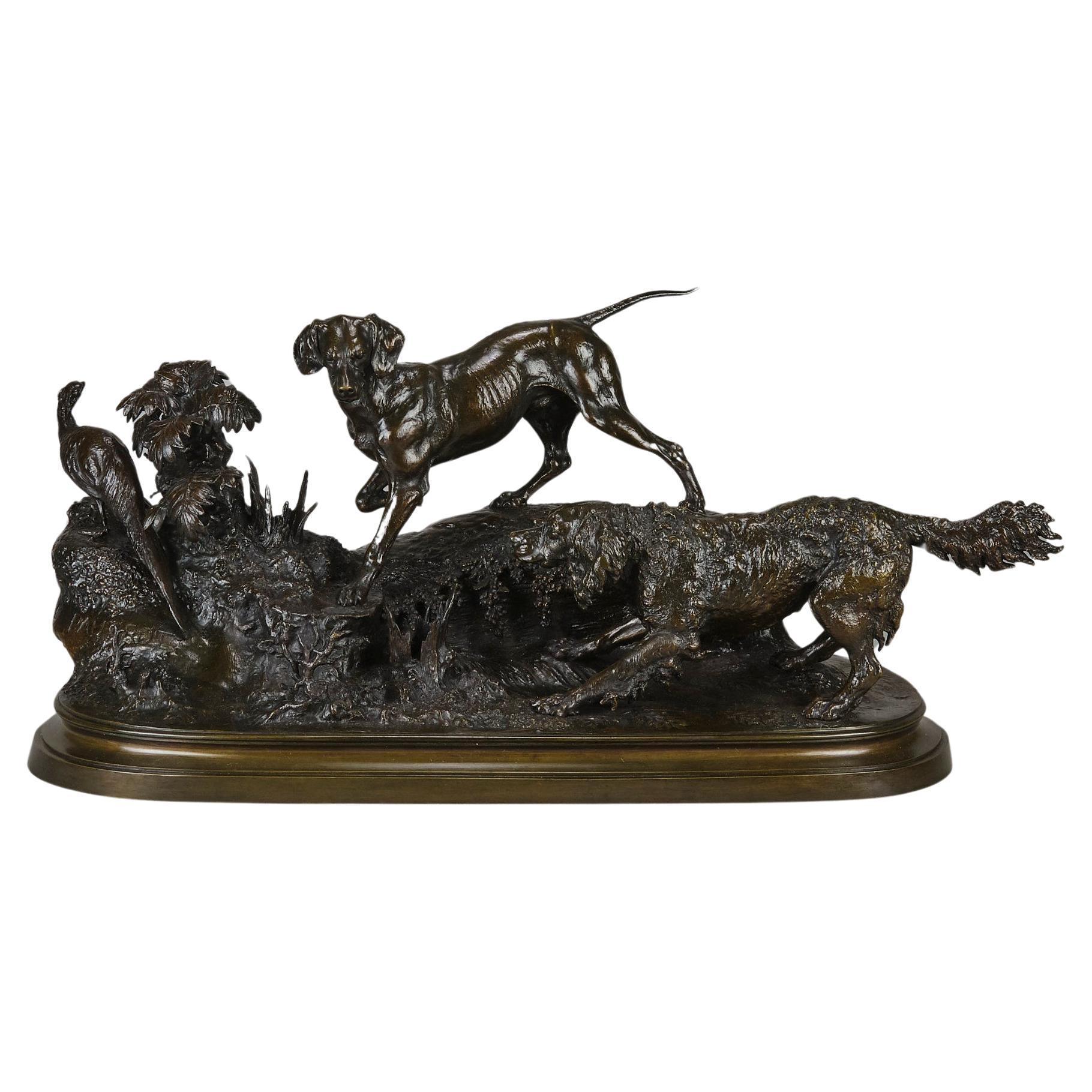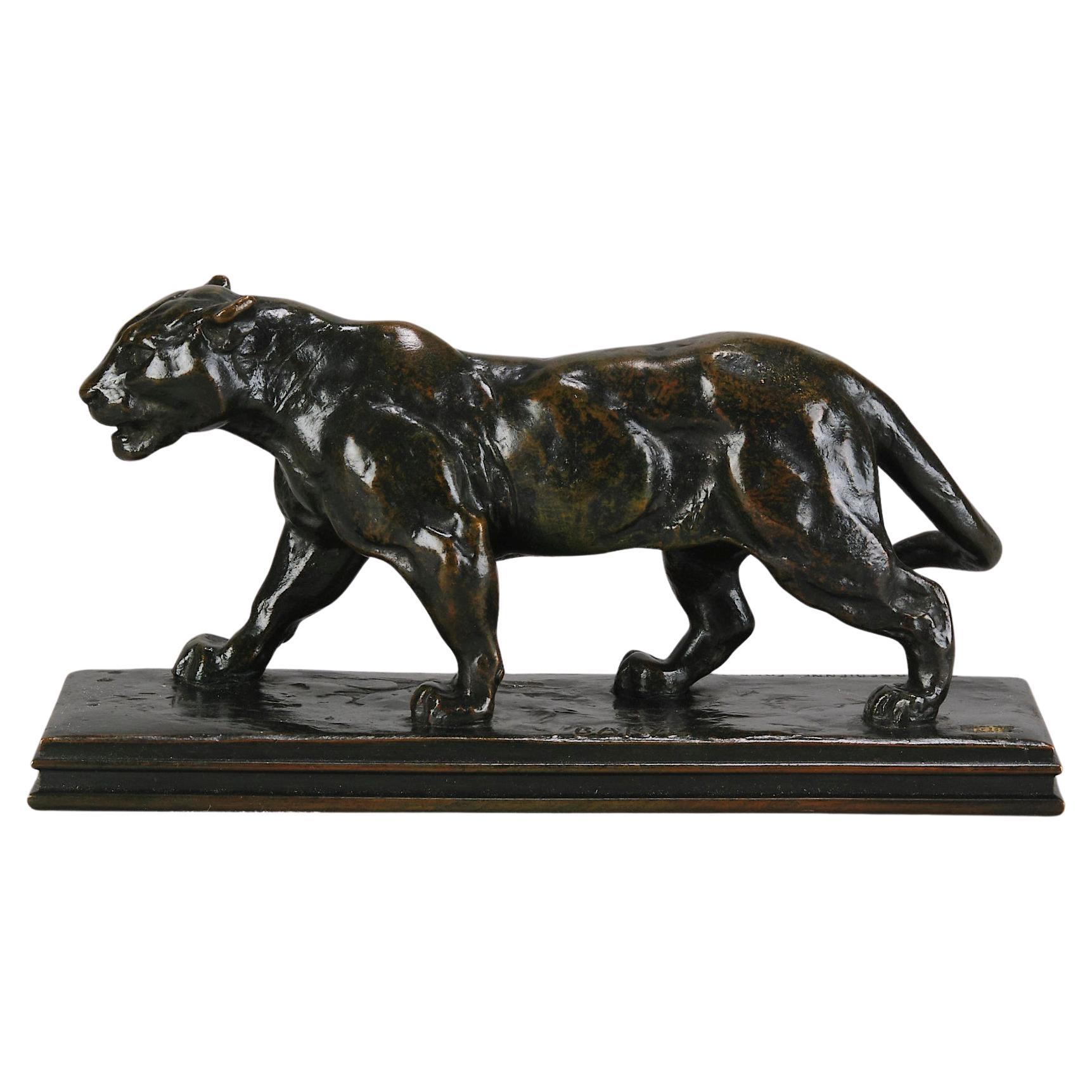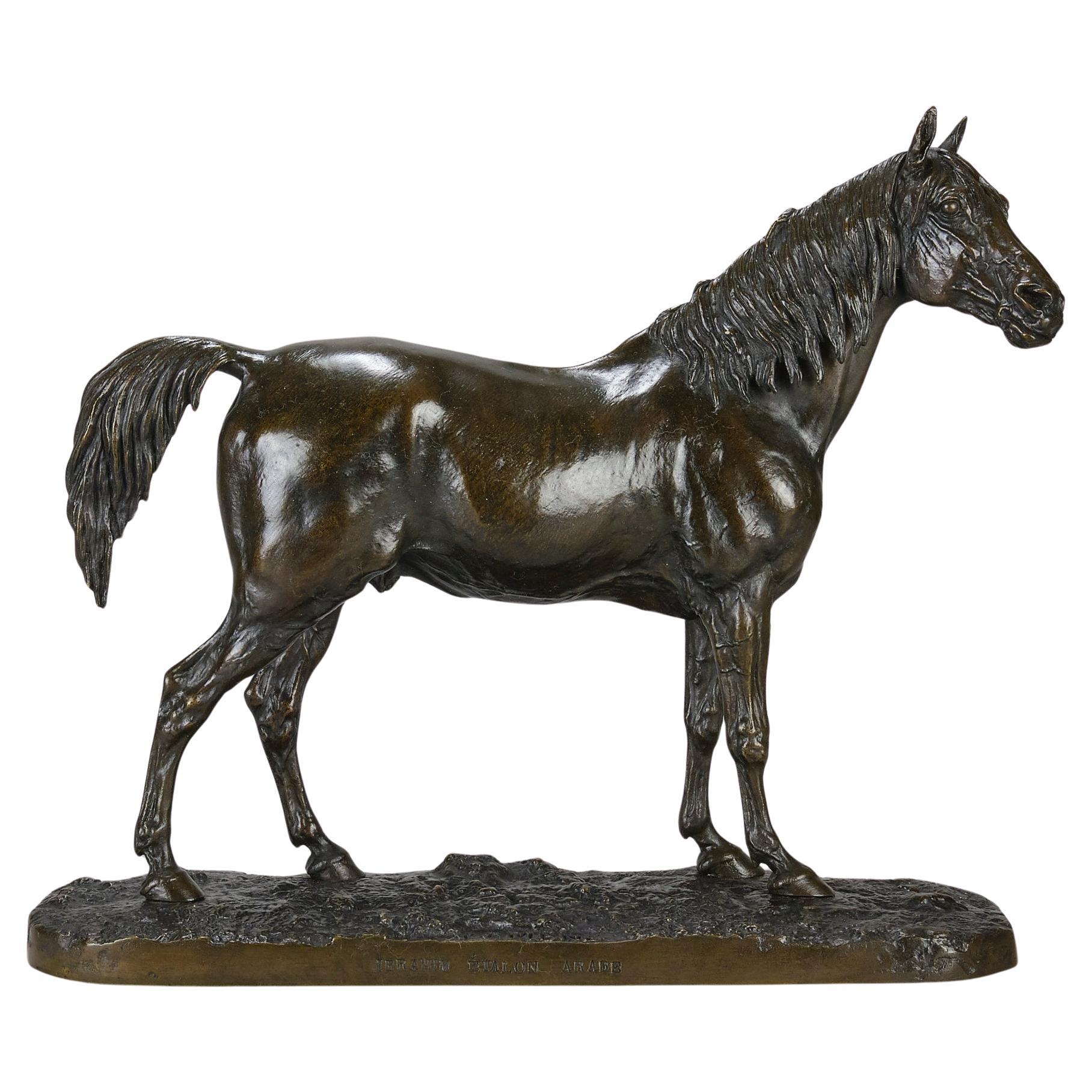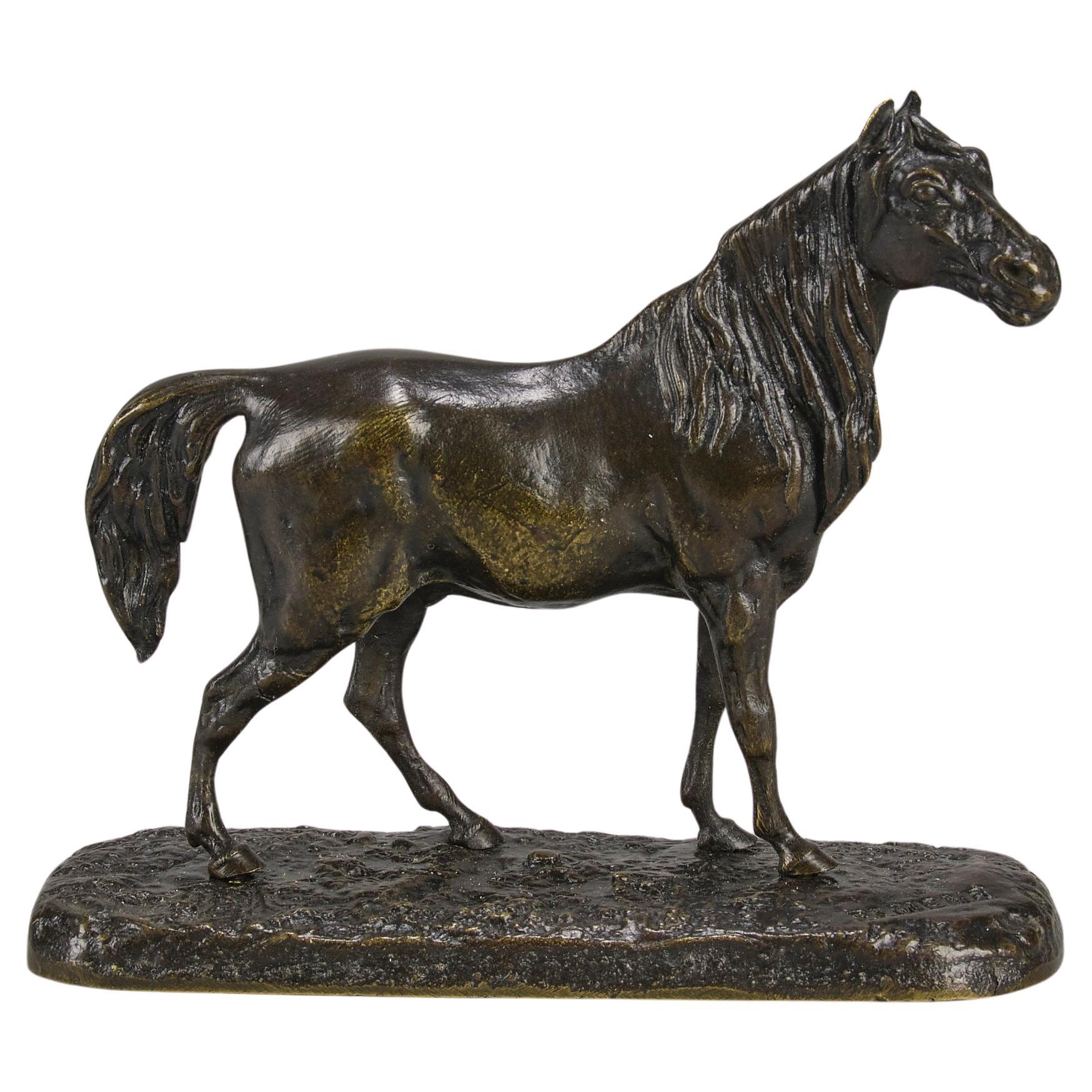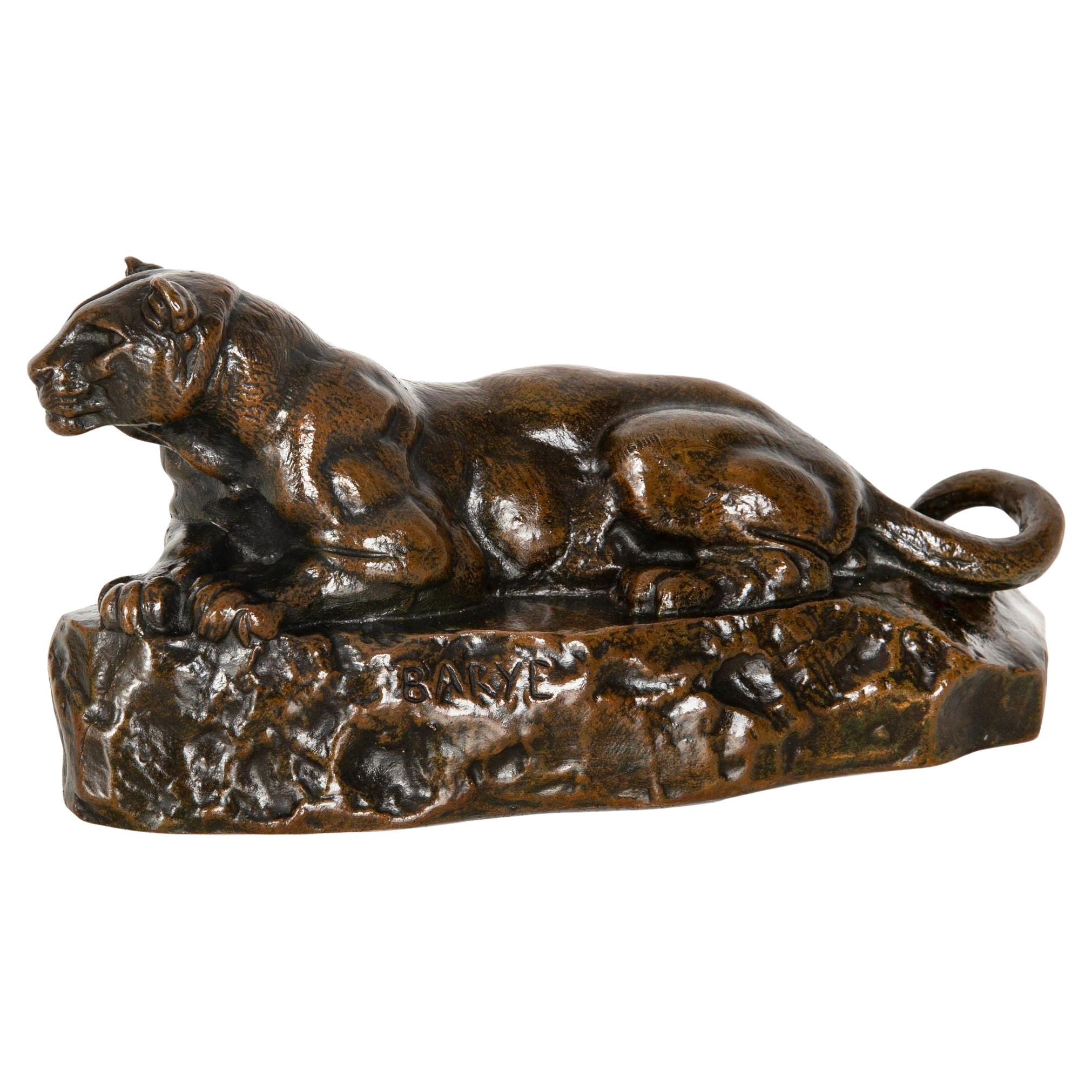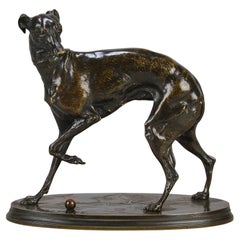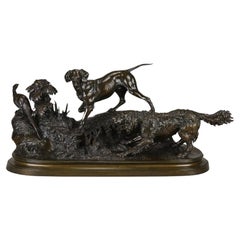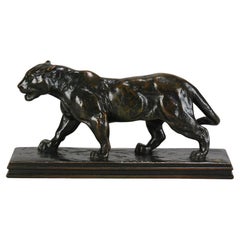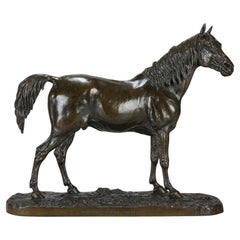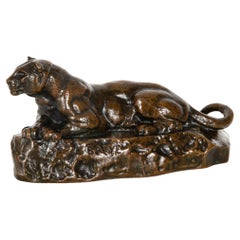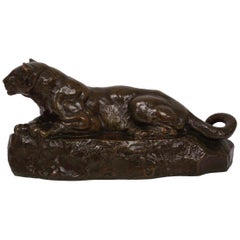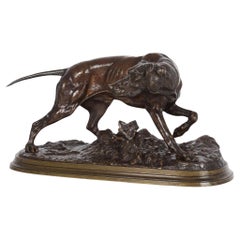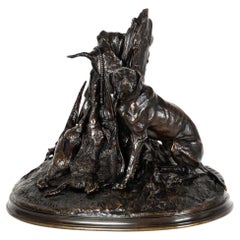Items Similar to 19th Century Animalier Bronze Sculpture entitled "Medor" by Pierre Jules Mene
Want more images or videos?
Request additional images or videos from the seller
1 of 14
19th Century Animalier Bronze Sculpture entitled "Medor" by Pierre Jules Mene
$3,647.50
£2,650
€3,106.23
CA$4,979.53
A$5,539.53
CHF 2,903.89
MX$67,691.68
NOK 36,977.41
SEK 34,809.12
DKK 23,186.81
Shipping
Retrieving quote...The 1stDibs Promise:
Authenticity Guarantee,
Money-Back Guarantee,
24-Hour Cancellation
About the Item
An excellent mid 19th Century Animalier bronze study of a setter in an alert turning pose with very fine rich brown patina and intricate hand chased surface detail, raised on naturalistic base, signed P J Mêne
ADDITIONAL INFORMATION
Height: 15 cm
Width: 33 cm
Depth: 13 cm
Condition: Excellent Original Condition
Circa: 1870
Materials: Bronze
Foundry: Atelier Mêne
Book Ref: Pierre-Jules Mene by Michel Poletti
Page No: 108
SKU: 9197
ABOUT
P J Mene, French 1810 ~ 1879
Pierre Jules Mêne is probably the best known of the French Animaliers School and his bronzes are today among the most highly prized in this genre. Surrounded as we are by disturbance and even violence, collectors of his work can find relaxation and enjoyment in contemplating the innate grace and beauty of his sculpture.
Beginning in 1838 Mêne worked at his own foundry, casting first his own works and later also those of his son-in-law Auguste Cain. He became absorbed in the meticulous work of casting and chiselling and ensured that during his lifetime the bronzes that were cast were always checked for quality, colour and finish before they were allowed to leave the foundry.
As a regular exhibitor at the Salon des Beaux-Arts many of Mêne’s subjects were shown to the general public in this popular showcase where acclaim and criticism could be judged before including the subject in his general Ouevre. This also served to establish public awareness of his new works and provides a useful reference when dating the origin of a particular cast. As a further point of reference Mêne produced a catalogue of all his works and each of his models has an identifiable catalogue number.
After Mêne’s death in 1879 the Barbedienne and Susse Frères foundries acquired the rights to reproduce his many of his important models and these posthumous casts are marked F Barbedienne Fondeur and Susse Frères fondeur editeur respectively. These bronzes are of a fine quality and are cast by the leading bronze foundries in the late 19th and early 20th Centuries, however they do not have the vitality and attention to detail that Mêne achieved on the casts from his own foundry.
- Creator:Pierre Jules Mêne (Artist)
- Dimensions:Height: 5.91 in (15 cm)Width: 13 in (33 cm)Depth: 5.12 in (13 cm)
- Style:Art Nouveau (Of the Period)
- Materials and Techniques:Bronze,Cast
- Place of Origin:
- Period:
- Date of Manufacture:1870
- Condition:Wear consistent with age and use.
- Seller Location:London, GB
- Reference Number:Seller: 91971stDibs: LU3216340470502
About the Seller
5.0
Gold Seller
Premium sellers maintaining a 4.3+ rating and 24-hour response times
Established in 1936
1stDibs seller since 2017
80 sales on 1stDibs
Typical response time: 1 hour
- ShippingRetrieving quote...Shipping from: London, United Kingdom
- Return Policy
Authenticity Guarantee
In the unlikely event there’s an issue with an item’s authenticity, contact us within 1 year for a full refund. DetailsMoney-Back Guarantee
If your item is not as described, is damaged in transit, or does not arrive, contact us within 7 days for a full refund. Details24-Hour Cancellation
You have a 24-hour grace period in which to reconsider your purchase, with no questions asked.Vetted Professional Sellers
Our world-class sellers must adhere to strict standards for service and quality, maintaining the integrity of our listings.Price-Match Guarantee
If you find that a seller listed the same item for a lower price elsewhere, we’ll match it.Trusted Global Delivery
Our best-in-class carrier network provides specialized shipping options worldwide, including custom delivery.More From This Seller
View AllMid 19th Century Animalier Bronze Sculpture entitled "Jiji" by P J Mêne
By Pierre Jules Mêne
Located in London, GB
Delightful mid 19th Century French Animaliers bronze study of a playful Whippet looking around in an attitude to play with a ball at her feet, with rich brown rubbed to a golden colo...
Category
Antique Mid-19th Century French Art Nouveau Animal Sculptures
Materials
Bronze
19th Century Animalier Bronze entitled "Chiens de Chasse" by Ferdinand Pautrot
By Ferdinand Pautrot
Located in London, GB
An excellent late 19th Century French Animalier bronze group of a setter and pointer trying to flush out a pheasant with excellent rich brown patina and very fine hand chased surfac...
Category
Antique Mid-19th Century French Art Nouveau Figurative Sculptures
Materials
Bronze
Mid 19th Century Animalier Bronze "Jaguar Qui Marche" by Antoine L Barye
By Antoine-Louis Barye
Located in London, GB
A dramatic mid 19th Century French bronze animalier study of a powerful striding jaguar with excellent autumnal (green, brown, and orange) patina and intricate hand chased surface de...
Category
Antique Mid-19th Century French Art Nouveau Animal Sculptures
Materials
Bronze
Mid 19th Century Animalier Bronze entitled "Ibrahim" by P J Mêne
By Pierre Jules Mêne
Located in London, GB
Excellent French mid 19th Century Animalier bronze portaiture study of the French Derby winner "Ibrahim", with rich brown lightly rubbed patination and fine hand finished surface det...
Category
Antique Mid-19th Century French Art Nouveau Animal Sculptures
Materials
Bronze
Late 19th Century Animalier Bronze Sculpture "Cheval Arabe No.3" by Pierre Jules
By Pierre Jules Mêne
Located in London, GB
"Cheval Arabe No.3" by Pierre Jules Mene
An attractive late 19th Century Animalier bronze study of an arab stallion. The bronze exhibiting excellent hand chased surface detail and g...
Category
Antique 19th Century French Art Nouveau Animal Sculptures
Materials
Bronze
19th Century Animalier French Bronze Entitled "Taureau Debout" by Rosa Bonheur
By Rosa Bonheur
Located in London, GB
"Taureau Debout" by Rosa Bonheur.
An excellent late 19th Century French animalier bronze study of a standing bull with fine hand chased surface that accentuates the muscle definition of the subject, signed Rosa B.
ADDITIONAL INFORMATION
Measures: Width: 32 cm
Height: 18 cm
Depth: 11cm
Condition: Excellent Original Condition
Circa: 1870
Materials: Bronze
Book reference: Animals in Bronze by Christopher Payne
Page no. 174
DESCRIPTION
Bonheur, Rosa (1822-1899)
The most popular artist of nineteenth-century France, Rosa Bonheur was also one of the first renowned painters of animals and the first woman awarded the Grand Cross by the French Legion of Honor. A professional artist with a successful career, Bonheur lived in two consecutive committed relationships with women.
Born on March 16, 1822 in Bordeaux, Marie Rosalie Bonheur was the oldest of the four children of Raimond Oscar Bonheur (1796-1849) and Sophie Marquis. Bonheur's father was an art teacher who came from a poor family, while her mother, a musician, had descended from a middle-class family and had been her husband's art student.
Bonheur's father, who taught drawing and landscape painting, was an ardent member of the utopian Saint Simeon society.
The group held idealistic beliefs about the reform of work, property, marriage, and the role of women in society. Most importantly, for the artist's future, the Saint Simeons questioned traditional gender norms and firmly believed in the equality of women. While teaching artistic techniques to his oldest daughter, Raimond Bonheur also encouraged her independence and taught her to consider art as a career.
In 1828 Raimond Bonheur joined the Saint Simeons at their retreat outside Paris. Sophie and the children joined him in Paris the following year. Four years later, however, Raimond abandoned his family to live in isolation with his fellow Saint Simeons.
Sophie Bonheur died in 1833 at the age of thirty-six. Rosa was only eleven years old when her mother died, but she was aware of the heavy price her mother paid for married life with a man who was more dedicated to his own ideals than to meeting his family's needs. Rosa also saw that her mother's marriage led to poverty and her death from exhaustion.
After her mother's death, Bonheur was taken in by the Micas family who resided nearby. Mme Micas and Bonheur's mother had been friends. When Mme Bonheur died, the Micas family paid Raimond Bonheur's debts and cared for Rosa. Their daughther, Nathalie, who would later become an amateur inventor and unschooled veterinarian, and Rosa became enamored with each other.
When Rosa Bonheur began her career as a professional artist, she had already been trained by her father who had allowed her to study in all male classes. Rosa also learned by sketching masterworks at the Louvre from the age of fourteen, and later, by studying with Léon Cogniet.
From the very beginning, Bonheur's favorite subject was animals. She learned their anatomy completely by dissecting them in local slaughterhouses. She also visited the horse market two times a week. Study of animals by direct observation led to the formation of the realist style in which Bonheur worked.
It was for such work that Bonheur obtained written permission from the French government to wear men's slacks. Her working attire also consisted of a loose smock and heavy boots that protected her feet from the dangerous environment in which she painted. The style of dress that the artist adopted for work and home may well have been influenced by her father's attire, which was based on St. Simeonian clothing experiments. Bonheur also cropped her hair, perhaps to facilitate her work. She did, however, always wear dresses for social occasions because she knew that appropriate dress would further her career.
Bonheur earned a successful living as a painter of animals. She exhibited at the annual Paris Salon regularly from the age of nineteen in 1841 through 1853, when she was thirty-one. She won the salon's gold medal at the age of twenty-six in 1848 and was commissioned by the French government to paint Plowing on the Nivernais in 1849. In the same year Bonheur and her sister Juliette became directors of l'École gratuite de dessin pour les jeunes filles, a post their father had once held.
Bonheur completed her most renowned work, The Horse Fair, in 1855. The successful representation of percherons (a breed native to Normandy) was purchased by Ernest Gambart, a London art dealer whose gallery specialized in work by French artists. He exhibited The Horse Fair in London where Bonheur visited with Nathalie. Queen Victoria requested a private viewing of the painting at Windsor Castle. It would later be purchased in 1887 by Cornelius Vanderbilt and donated to the new Metropolitan Museum of Art in New York City.
Bonheur's trip to England allowed her to meet Charles Eastlake, then President of the Royal Academy, John Ruskin, the English writer and critic, and Edwin Landseer, the British animalier. She also toured the English and Scottish countrysides and executed some paintings based on her observations of new breeds of animals found there.
Gambart made engravings of Bonheur's work, including The Horse Fair, and sold them in England, Europe, and the United States. Bonheur became one of the most renowned painters of the time. Little girls, such as Anna Klumpke in the United States, even had dolls in her likeness, much as American girls played with Shirley Temple dolls...
Category
Antique 19th Century French Art Nouveau Animal Sculptures
Materials
Bronze
You May Also Like
French Antique Bronze Sculpture “Panther of Tunisia” by Antoine-Louis Barye
By Antoine-Louis Barye
Located in Shippensburg, PA
ANTOINE-LOUIS BARYE
French, 1796-1875
Panther of Tunisia [smaller version]
Sand-cast patinated bronze
Signed in cast BARYE
Cast executed last quarter of the 19th century
3 1/2" H ...
Category
Antique 19th Century French Romantic Animal Sculptures
Materials
Bronze
Bronze Sculpture "Panther of Tunisia" After Antoine-Louis Barye, Barbedienne
By F. Barbedienne Foundry, Antoine-Louis Barye
Located in Shippensburg, PA
An exceedingly fine posthumous cast of Barye's Panther of Tunisia no. 2 executed by the foundry of Ferdinand Barbedienne, this piece retains it's silky original overall nearly transl...
Category
Antique 19th Century French Romantic Animal Sculptures
Materials
Bronze
French Antique Bronze Sculpture of Pointer Dog by Pierre-Jules Mêne circa 1880
By Pierre Jules Mêne
Located in Shippensburg, PA
PIERRE-JULES MÊNE
French, 1810-1879
"Chien braque à la feuille"
Medium-brown patinated sand-cast bronze raised edge signature cast into base "P.J. MÊNE" ...
Category
Antique 19th Century French Romantic Animal Sculptures
Materials
Bronze
French 19th Century Bronze Sculpture “Gardant du Gibier” by Pierre-Jules Mêne
By Pierre Jules Mêne
Located in Shippensburg, PA
PIERRE-JULES MÊNE
France, 1810-1879
"Chien Gardant du Gibier" (1850)
Sand-cast patinated bronze signed in cast "P.I. MÊNE 1850" cast circa 1870-1880
Item # 405ZIM29Q
One of Mên...
Category
Antique 19th Century French Animal Sculptures
Materials
Bronze
Rare 26” Georges Gardet “Desert Drama” Antique French Bronze Sculpture
By Georges Gardet
Located in Shippensburg, PA
GEORGES GARDET
French, 1863-1939
"Le Drame au Désert"
Patinated bronze Signed in cast "Georges Gardet" cold-stamped 3105 conceived 1887, cast circa 1910
Item # 411RAL12A
A ver...
Category
20th Century French Romantic Animal Sculptures
Materials
Bronze
French Antique Bronze Sculpture of “Tiger and Tortoise” after Georges Gardet
By Georges Gardet
Located in Shippensburg, PA
GEORGES GARDET
French, 1863-1939
"La Tigre et la Tortu" [The Tiger and the Tortoise] (1886)
Sand-cast bronze with verde, red, brown and black patination signed to the base "GEORGE...
Category
Early 20th Century French Romantic Animal Sculptures
Materials
Bronze
